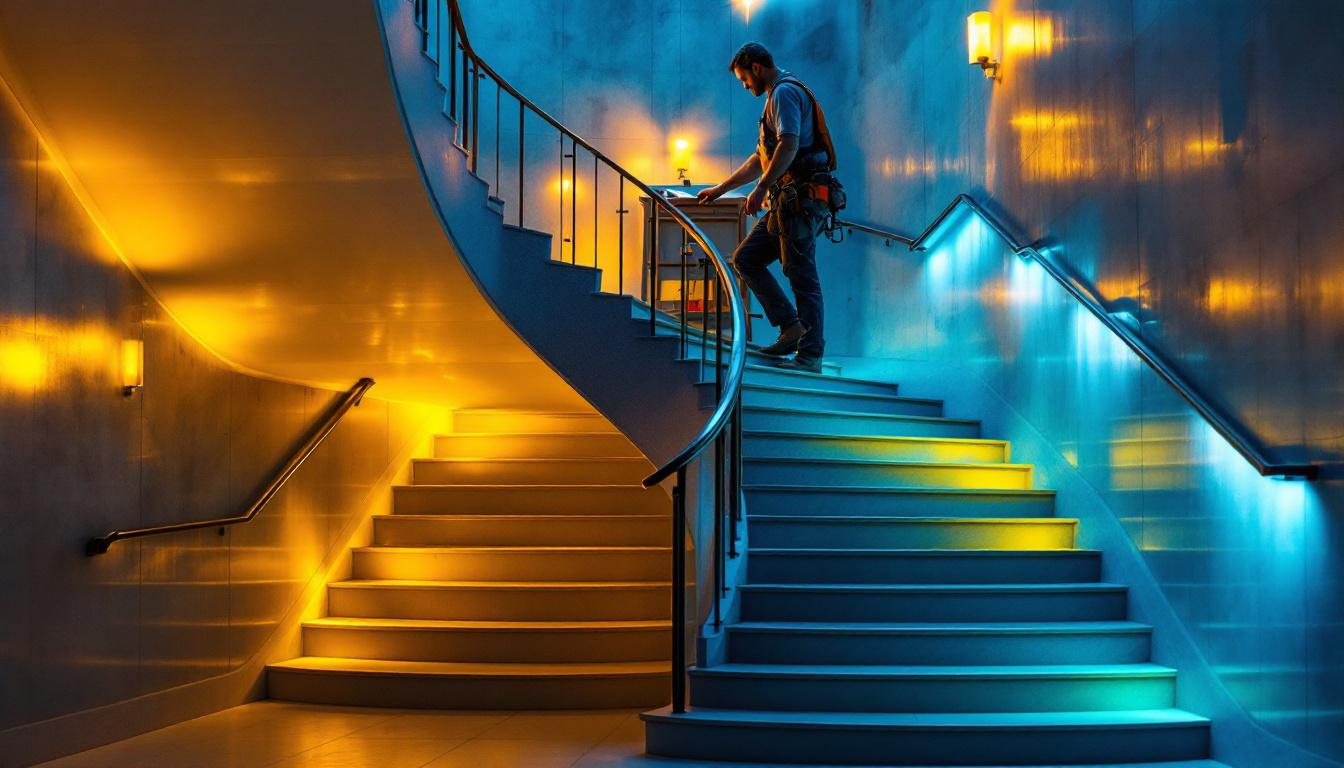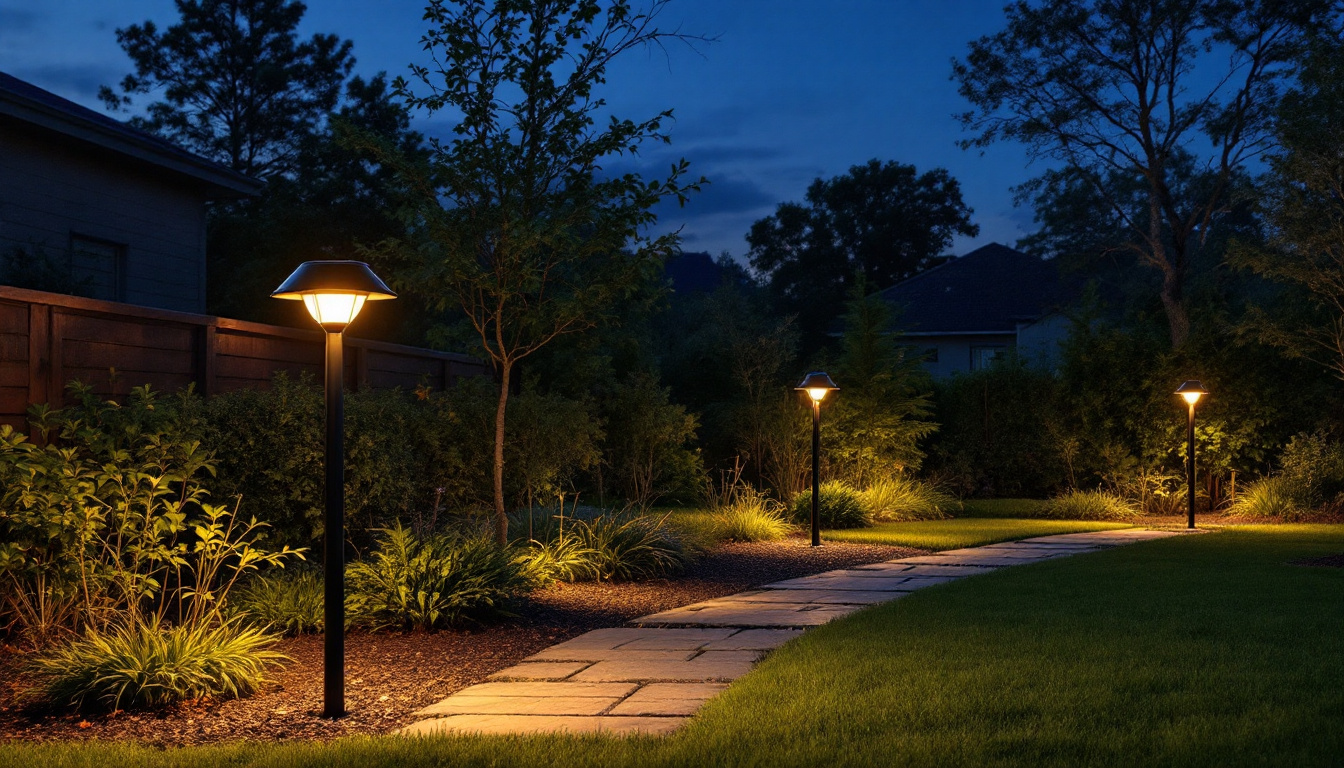
In the realm of interior design and architecture, lighting plays a pivotal role in enhancing aesthetics, functionality, and safety. Among the various aspects of indoor lighting, stair lighting stands out as a crucial element that not only illuminates but also elevates the overall ambiance of a space. For lighting contractors, mastering stair lighting can provide a competitive edge, opening doors to new opportunities and satisfied clients.
Stairways often serve as transitional spaces within homes and commercial buildings. Proper lighting in these areas is essential for safety, as it helps prevent accidents and falls. However, stair lighting is not merely a functional necessity; it also contributes significantly to the design narrative of a space.
Safety is paramount in any building, and stairways can be particularly hazardous without adequate lighting. Poorly lit stairs can lead to missteps and accidents, which can have serious consequences. By implementing effective stair lighting solutions, contractors can ensure that each step is visible, reducing the risk of falls. This is especially important in homes with children, elderly residents, or individuals with mobility challenges.
Moreover, well-lit stairways enhance accessibility, making it easier for everyone to navigate the space confidently. This consideration can be a selling point for contractors, as clients increasingly prioritize safety in their design choices. Furthermore, incorporating motion-sensor lighting can provide an added layer of convenience, automatically illuminating the stairs as someone approaches, thereby ensuring that the area is always well-lit when needed.
Beyond safety, stair lighting offers an opportunity to create visual interest. Thoughtfully designed lighting can highlight architectural features, such as handrails or the texture of the walls, transforming a mundane staircase into a focal point of the home or office. By utilizing different lighting techniques, such as uplighting or downlighting, contractors can create dramatic effects that enhance the overall aesthetic.
Additionally, integrating stair lighting with the surrounding decor can create a cohesive look throughout the space. This attention to detail can set a contractor apart, showcasing their ability to blend functionality with artistry. For instance, using LED strips along the edges of each step not only provides illumination but also adds a modern touch that can complement contemporary design themes. Furthermore, selecting warm or cool color temperatures can evoke different moods, allowing homeowners to customize the ambiance according to their preferences or the time of day.
When it comes to stair lighting, there are various solutions that contractors can offer, each with its unique advantages. Understanding these options can help contractors tailor their services to meet the specific needs of their clients.
Recessed lighting is a popular choice for stairways, as it provides a clean and modern look. Installed directly into the ceiling or walls, recessed lights can be strategically placed to illuminate each step without taking up visual space. This type of lighting is particularly effective in contemporary designs, where minimalism is key.
Moreover, recessed lights can be equipped with dimmers, allowing users to adjust the brightness according to their preferences. This flexibility can be especially appealing to clients who want to create different moods in their spaces. Additionally, energy-efficient LED options are available, which not only reduce electricity costs but also have a longer lifespan compared to traditional bulbs, making them a sustainable choice for eco-conscious homeowners.
Step lights are another excellent option for stair lighting. These fixtures are typically installed directly into the risers of each step, providing a soft glow that guides users safely up and down the stairs. Step lights are available in various styles, from sleek and modern to more traditional designs, allowing contractors to match the lighting to the overall aesthetic of the home.
In addition to their safety benefits, step lights can also create a stunning visual effect, especially when used in conjunction with other lighting elements. They can highlight the contours of the stairs, making them a striking feature of the interior design. Furthermore, step lights can be integrated with smart home technology, enabling homeowners to control them remotely or set them to activate automatically at dusk, enhancing both convenience and security.
Wall sconces offer a versatile and decorative lighting solution for stairways. Mounted on the walls adjacent to the stairs, these fixtures can provide both ambient and task lighting. Sconces come in a wide variety of styles, materials, and finishes, making it easy for contractors to find options that align with their clients’ preferences.
Furthermore, wall sconces can be placed at different heights, allowing for creative lighting designs that draw the eye and enhance the architectural features of the stairway. This adaptability can be a significant selling point for contractors looking to provide customized solutions. Additionally, wall sconces can be paired with motion sensors, ensuring that the lights turn on automatically when someone approaches the stairs, which is particularly beneficial for families with children or elderly members who may need extra assistance navigating the space.
As technology continues to evolve, so too do the possibilities for stair lighting. Integrating smart technology into lighting designs can provide contractors with an edge in a competitive market. Smart lighting solutions offer convenience, energy efficiency, and enhanced control, making them increasingly popular among homeowners and businesses alike.
Smart lighting controls allow users to manage their stair lighting from their smartphones or through voice commands. This level of control can be particularly beneficial for stairways, where users may need to turn lights on or off while carrying items or navigating the space. By offering smart lighting solutions, contractors can appeal to tech-savvy clients who value convenience and innovation.
Additionally, smart lighting systems can be programmed to adjust automatically based on the time of day or occupancy, ensuring that stairways are always adequately lit when needed. This energy-efficient approach can also help clients save on their electricity bills, making it an attractive feature.
Incorporating motion sensors into stair lighting can enhance both safety and energy efficiency. These sensors can automatically turn on lights when someone approaches the stairs, providing illumination without the need for manual switches. This feature is particularly useful in homes with children or elderly residents, as it ensures that lights are always on when needed.
Moreover, motion sensors can help reduce energy consumption by turning off lights when the area is unoccupied. This not only benefits the environment but also appeals to clients looking for sustainable solutions.
When planning stair lighting, contractors must consider various design elements to ensure that the lighting is both functional and aesthetically pleasing. A well-thought-out lighting design can significantly enhance the overall experience of navigating stairs.
The color temperature of stair lighting can dramatically affect the mood of the space. Warmer color temperatures (around 2700K to 3000K) create a cozy and inviting atmosphere, while cooler temperatures (4000K and above) provide a more modern and energetic feel. Contractors should work closely with clients to determine the desired ambiance and select lighting that aligns with their vision.
Additionally, the color temperature can be used to highlight specific architectural features or design elements, further enhancing the overall aesthetic of the stairway.
Strategic lighting placement is crucial for effective stair lighting. Contractors should consider the height and angle of the lights to ensure even illumination across the entire staircase. Shadows can create hazards, so it’s essential to avoid dark spots that could lead to missteps.
Incorporating multiple layers of lighting—such as ambient, task, and accent lighting—can create a well-balanced and visually appealing environment. This layered approach allows for flexibility in how the space is used and can adapt to different activities or moods.
For lighting contractors, effectively marketing stair lighting services can lead to increased business opportunities. As clients become more aware of the importance of lighting in their homes, contractors who highlight their expertise in stair lighting can differentiate themselves from competitors.
One of the most effective ways to market stair lighting services is by showcasing successful projects. Before-and-after photos, testimonials, and case studies can illustrate the impact of quality stair lighting on a space. By presenting compelling visuals and stories, contractors can capture the attention of potential clients and demonstrate their capabilities.
Additionally, sharing projects on social media platforms can broaden reach and engage with a wider audience. Highlighting unique design solutions or innovative technologies can position contractors as thought leaders in the industry.
Creating educational content, such as blog posts or videos, can further establish a contractor’s expertise in stair lighting. Topics could include the benefits of different lighting types, tips for safe stair lighting design, or the latest trends in smart lighting technology. This content not only provides value to potential clients but also enhances the contractor’s online presence and credibility.
By positioning themselves as knowledgeable resources, contractors can build trust with clients and encourage them to reach out for their lighting needs.
Stair lighting is a vital component of indoor lighting design that offers both safety and aesthetic benefits. For lighting contractors, mastering this niche can provide a competitive edge in the industry. By understanding the various types of stair lighting solutions, integrating smart technology, and considering design elements, contractors can deliver exceptional results that meet their clients’ needs.
Furthermore, effective marketing strategies that showcase successful projects and provide educational content can help contractors stand out in a crowded market. As clients increasingly recognize the importance of quality lighting, those who specialize in stair lighting will find themselves well-positioned to thrive in the evolving landscape of interior design.
Ready to give your clients the best in stair lighting design? At LumenWholesale, we provide lighting contractors with an exceptional range of high-quality, spec-grade lighting products at prices that can’t be beaten. Say goodbye to local distributor markups and hello to our direct-to-you wholesale deals. With our commitment to quality, affordability, and convenience, you’ll find everything you need to create stunning, safe, and efficient stair lighting installations. Plus, with free shipping on bulk orders, you can trust that you’re getting premium lighting at the best value. Elevate your lighting game and browse our selection at LumenWholesale today!

Discover the innovative strategies smart lighting contractors use to select and install the best solar lights.

Discover the essential facts about dimmable switches that every lighting contractor needs to know.

Discover why LED linear high bay lights are a game-changer for lighting contractors.

Discover the essential checklist for lighting contractors when installing a LED dimmer switch with remote control.